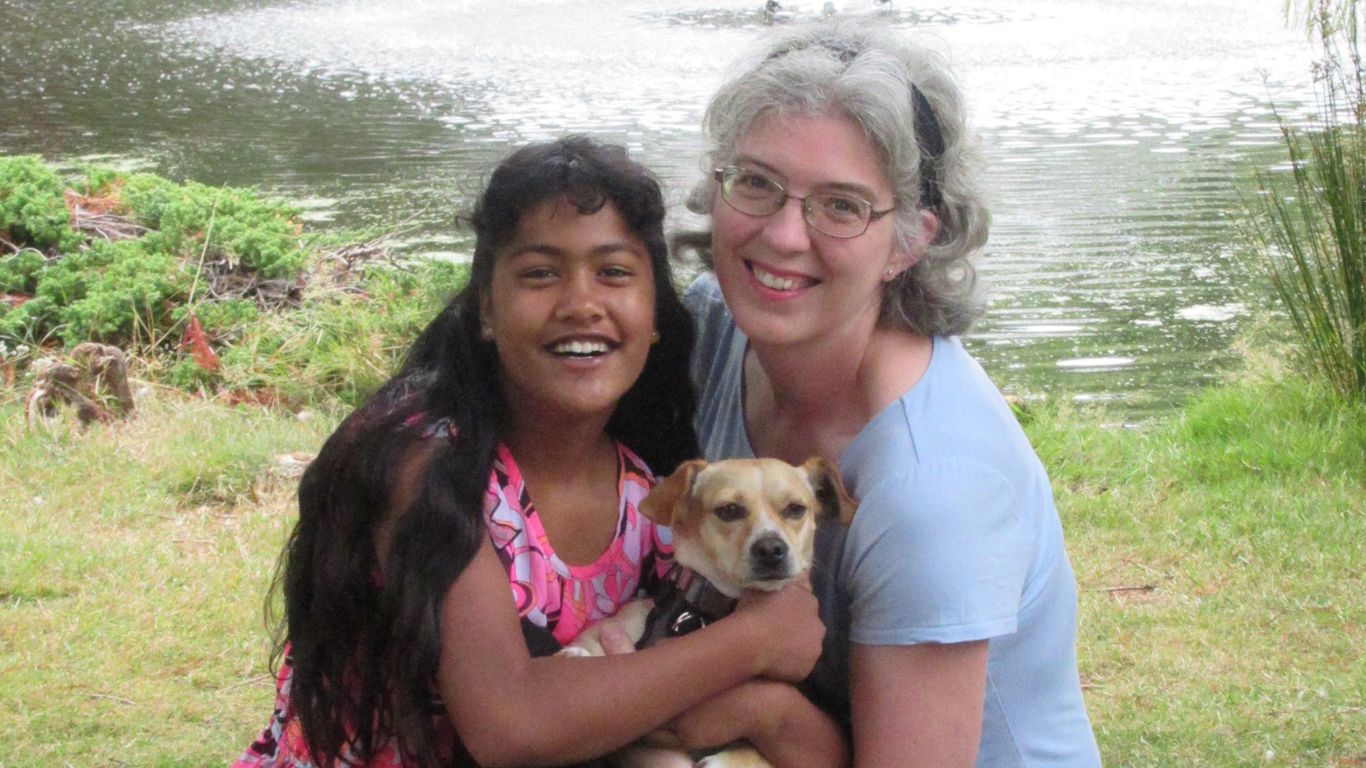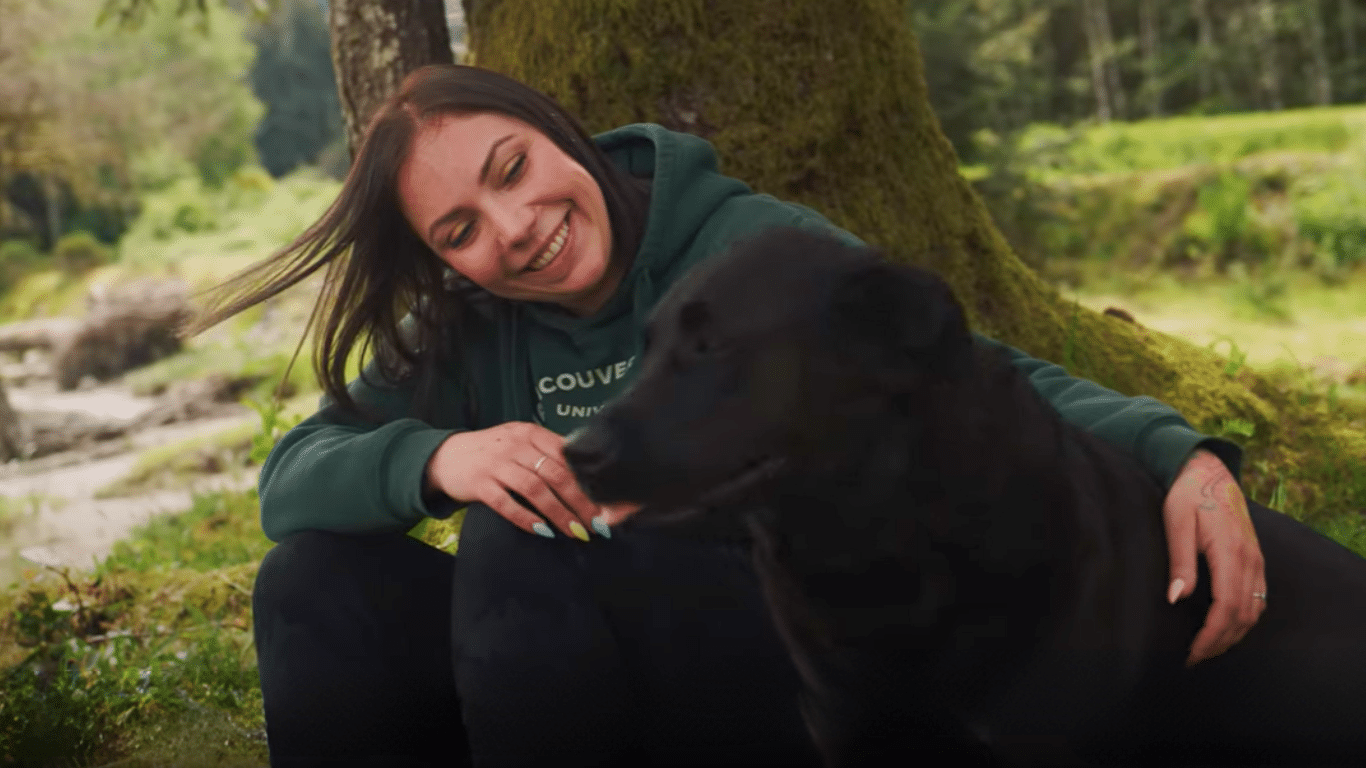The decision to adopt
Kathy and Rick Miller already had four birth children between the ages of nine and 16, when they decided to add a sibling group of two to their family. “We enjoy children a lot,” said Kathy, who has a degree in Child and Youth Care. “We have lots of parenting experience, and we felt we had a lot to offer as a family.” She and Rick, who is a teacher, wanted more children, but felt that it was better “to expand our family by adding children who genuinely needed a home, rather than biologically.”
Although initially interested in adopting locally, their first encounter with their local Ministry adoption worker went badly. They were told that the kids would cause irreparable harm to the rest of their family. They shifted their sights to Haiti, until a new social worker took over, and asked them to reconsider the Ministry. Their new social worker was great, said Kathy. “She told us there were all sorts of kids that need all sorts of families … She was very encouraging.” The adoption process proceeded at an alarming speed. Once the paperwork was in order in March 1998, they received a proposal three days later. By July, the Millers had two new sons, Darren, 3, and David, 6, in their home.
History
The speed of the adoption belied the complex historical, social, and political background to the placement. The boys, who share the same biological mother, have Inuit heritage related to a band in Labrador. Both had been in their respective foster homes from a young age, Darren since one month, David since birth. The birth mother was living on the street, and had used drugs, and alcohol, while pregnant. The boys did not know each other – they were being raised in separate foster homes in the Lower Mainland. Similarly, neither of them was aware that they were in foster care and that they might, at some point, be moved to a new family, said Kathy. “Both foster families were devastated to lose them. They came with toys and clothes. They came with beautiful photo albums. It was obvious that they were well looked after.”
The Ministry had been trying for years to place the children in a family that shared their heritage. The extended family could take one child but not both, but wanted the children to be raised together, rather than separately, in Inuit homes. Through this strange set of circumstances, the boys were removed from their foster families and placed together in the Millers’ home.
The Millers had to write about how they would ensure that the boys would remain connected with their heritage, and that they would take that responsibility seriously. They have books on Inuit heritage, and have plans to visit the band in Labrador in the future.
Adjustments
The boys have been living in their new home for two years now. Kathy said they both went through grieving and sadness, and the first year was tough for all of her children. The youngest, Darren, was non-verbal and aggressive. But Kathy says the support they received from their social worker helped immensely. She encouraged them to take one step at a time, and they gave their social worker kudos for checking in on them on a regular basis. “She didn’t abandon us … she hooked us up with people, and recommended books. It helped to hear that other families had gone through the same thing,” said Kathy.
Darren has neurological problems associated with prenatal alcohol use by his birth mother, and he is severely mentally delayed. David has been diagnosed with partial FAS (also know as FAE). However, Kathy said, she’s amazed at how caring and sweet and kind he is. He struggles at school but is doing well in reading and gets help in math. Despite this, the small community they live in is very supportive and accepting. “People look out for each other here,” said Kathy.
“We love them both and we are happy, but it was definitely a shock. You have to accept the effects of alcohol exposure, and do the best you can.” They were surprised at how much easier their six-year-old turned out to be. “We thought the older one would be harder, but the opposite proved true,” she said. If we were to do it again, we would consider over six. Their issues are very clear by that age.” Stuart Rennie, an MCFD social worker, concurred. At a Belonging Network conference, four years ago, he said the Ministry has a very clear picture of children by the time they are six. Up to then, there are still many unknowns.
Family adjustments
Initially, Darren was accepted more readily by the birth children, and bonded with the 11-year-old daughter right away, despite having attachment issues. The older boy, David, was very tactile, and wanted to cuddle and touch a lot, which did not appeal to the other kids. It seemed that he was too old for that.
Support
The Millers’ social worker, who was described by Kathy as awesome, amazing, and great, set up a network of parents who had adopted special needs kids locally. “We met a whole new set of friends,” said Kathy. “We needed to connect with other families, and it was good for our birth kids as well not to feel so different.”
Post-adoption assistance
Without post-adoption assistance, Kathy doubts they would have adopted a sibling group. When the Millers decided to adopt two children, Kathy realized she would have to cut down her work hours to spend time at home with the boys. The assistance allows her to spend time at home with her children. With six children, she cannot work full-time and meet their needs. “It has also allowed quite a few large families in the north to adopt,” she added. The Millers receive a basic maintenance payment of $325 a month per child, which covers expenses related to their special needs such as orthodontics. For example, her eldest boy had no enamel on his teeth, which were also very crowded.
Benefits
Kathy’s 16-year-old daughter wants to be a speech and language pathologist. Her 13-year-old discovered a maternal side when she bonded with her new younger sibling. And Kathy’s youngest birth son now has a really good friend in David.
Kathy’s advice
“Be prepared for a tough first year. When we started, our confidence was really high. About six months into it, everyone was unhappy. It was very humbling. The most important thing you can do is provide stability for the children. For the first eight months, we felt more like babysitters than parents, and it got very tiring. At first it’s more of a commitment than love, and a lot of grieving goes on.”
Find out as much as you can about the special needs that you are agreeing to accept. Do the research.
- Never underestimate a toddler.
- Make sure everyone’s on board, including the foster parents.
- Ensure your birth children are adequately prepared.
- Get all the information you can on the children.
Last words
“You come to realize a really different lifestyle. People often say to us. ‘Boy you guys are really an interesting family,’ and it’s true. Family vacations and dining out are a thing of the past, but our children add a lot of richness to the family and make family life really interesting. We recommend it.”





